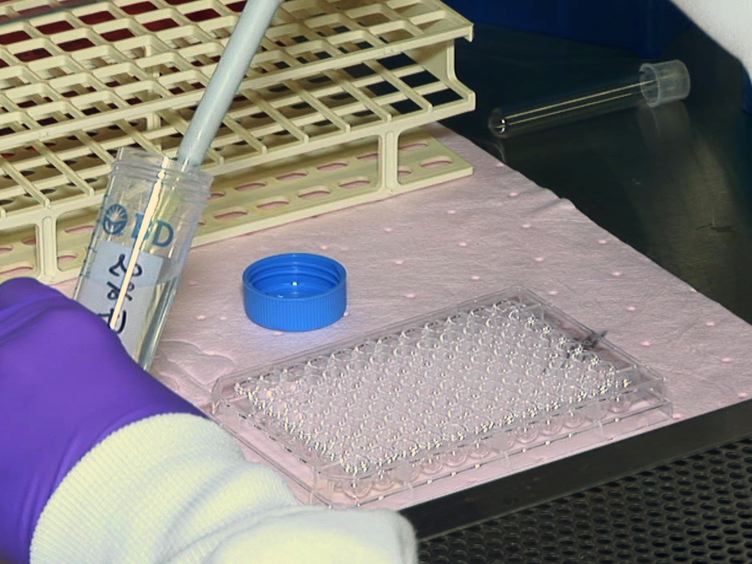Best Practices for Accurate Cell Cytotoxicity Assay Results

What is A Cell Cytotoxicity Assay?
Cell cytotoxicity assay is an analytical tool to determine the adverse effect of any substance on living cells by assessing cellular damage or cell death. These assays find extensive application in drug discovery and development. They can be performed both in vitro and in vivo. Some of the commonly used cell cytotoxicity assays include the lactate dehydrogenase assay, MTT assay, cell viability assay, DNA fragmentation assay, and assays for measuring mitochondrial membrane potential, reactive oxygen species, and calcium flux. These assays conduct cytotoxicity screening of potential drug candidates and other substances, infectious disease diagnosis, and basic scientific research, along with other clinical bioanalysis services.
Cell toxicity assays are rapid, relatively inexpensive, and eliminate the need for animal-based testing. They are also high-throughput, making them ideal platforms for testing several samples. On the other hand, Cell Cytotoxicity Assays have some limitations. These assays fail to capture long-term cytotoxic effects and do not reveal the mechanisms underlying toxicity. Additionally, this assay cannot offer the complete psychological context of an in vivo environment.
Best Practices for Improved Accuracy in Cell Cytotoxicity Assay
The key steps involved in the cell cytotoxicity assay protocol are cell culturing, exposing the cultured cells to the substance under investigation, and then determining the extent of cellular damage or cell death. Thereafter, the data generated is analyzed.
The cell culturing step involves using appropriate media and conditions, determining cell density, and cell seeding into multi-well plates. Thereafter, a suitable concentration of the test substance is added to the cell culture, followed by incubation. Thereafter, cell damage or death is determined using a method based on the type of assay used, e.g., MTT assay, LDH assay, and flow cytometry. The data collected is analyzed to obtain the results, which give the percentage of cell viability. From the results, a dose-response curve is plotted to determine the IC50 value.
Having obtained a brief insight into the method of cell toxicity assay, let us focus on ways to enhance accuracy. Firstly, researchers should maintain consistent environmental conditions for the cell culture. It involves maintaining appropriate temperature (usually 37 ᵒC), carbon dioxide (usually 5%), and humidity levels. Cells are sensitive to these conditions, and therefore, incubation parameters should be set carefully. Secondly, scientists should handle cell cultures carefully to minimize the stress caused. It is necessary to reduce the number of times the cell cultures are handled or exposed to varying environmental conditions.
Must Read: Optimizing Sample Preparation Techniques for LC-MS Analysis
Furthermore, all test samples should be handled consistently to reduce variability between samples. Cell density can affect the results and, therefore, the sensitivity and reproducibility of the assay. Hence, cell density should be carefully determined. Another critical aspect to remember is the use of controls to minimize the background effects.
The selection of assay and appropriate reagents is another key step. Different cytotoxicity assays have varying sensitivities and specificities. They require different reagents, and it is crucial to use reagents of high quality, reliability, and appropriate concentration. The incubation time should be optimized for the chosen assay and cell type. Furthermore, control wells should include no cells and no treatment. In terms of controls, the use of positive, negative, and blank controls can be helpful. Negative controls (or untreated controls) use untreated cells. A negative control helps to establish a baseline of cell viability. Positive control involves the use of agents with pre-determined cytotoxicity. This approach helps to validate the assay’s capacity to assess damage or death. Finally, blank controls involve the use of medium and assay reagents without the test substance. It helps to determine the background absorbance in the assay.
Lastly, in terms of data analysis and interpretation, the researcher should employ appropriate statistical tests that compare the treatment groups and determine whether the results obtained are statistically significant. The results should be interpreted with caution, keeping in mind the limitations of the assay and the possibility of false positives or negatives.
In addition, researchers may use a combination of two or more assays to comprehensively assess cell cytotoxicity, thus enhancing the accuracy of the assay. Furthermore, replicating the assay can not only help to increase the reliability of the test but also identify potential sources of errors, which can enhance the accuracy of the Cell Toxicity Assay.
The practices mentioned above are a few of the best practices that researchers can follow to significantly improve the accuracy and reliability of their cell cytotoxicity assays. This process, in turn, can generate more meaningful results.
Tips for Cell Cytotoxicity Assay
In addition to the best practices mentioned above, the following aspects should be considered while performing cytotoxicity assays. Firstly, one needs to select the assay based on sensitivity, specificity, high throughput, and cost-effectiveness. Thereafter, it is necessary to carefully follow the manufacturer’s protocol that comes along with the assay kit. Reagents and controls should be prepared correctly through proper dilutions and mixing. Furthermore, the limitations associated with each assay should be evaluated carefully during result interpretation to avoid over-/underestimation of cell death.



